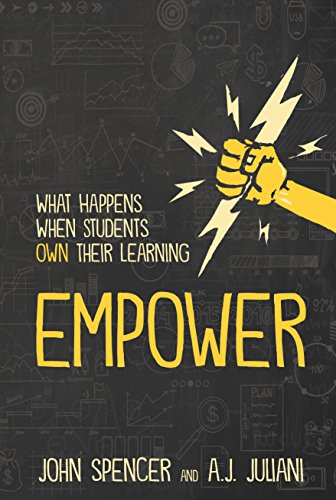Empower: What Happens When Students Own Their Learning Link to heading
Summary Link to heading
“Empower: What Happens When Students Own Their Learning” by John Spencer and A.J. Juliani explores the transformative potential of empowering students to take charge of their learning experiences. The authors focus on shifting the traditional teacher-centered model to a more student-driven approach where students engage in creative and meaningful projects. Through practical strategies and real-life examples, the book offers educators insights into fostering a classroom environment that promotes student agency, innovation, and intrinsic motivation.
Review Link to heading
Spencer and Juliani’s book is well-received for its practical approach and actionable strategies. It effectively highlights the importance of empowering students, making a strong case supported by research and anecdotal evidence. The book is praised for its clarity, engaging writing style, and relevance to contemporary educational challenges. While some could argue that more concrete assessment strategies could be discussed, the book remains a valuable resource for educators seeking to enhance student engagement and ownership in learning.
Key Takeaways Link to heading
- Student Agency: Encouraging students to take ownership of their learning leads to increased motivation and engagement.
- Project-Based Learning: Implementing project-based learning (PBL) allows students to work on meaningful tasks and fosters creativity.
- Critical Thinking: Empowered learning environments nurture critical thinking and problem-solving skills.
- Innovation: Emphasizing innovation and flexibility in teaching helps students adapt to rapidly changing environments.
- Teacher’s Role: Teachers act as guides and facilitators rather than authoritative figures, supporting student-led initiatives.
Recommendation Link to heading
“Empower: What Happens When Students Own Their Learning” is highly recommended for educators, school administrators, and policymakers interested in progressive teaching methods. Those eager to create a more dynamic and student-centered learning environment will find the book particularly beneficial. It provides practical strategies and inspiration for fostering lifelong learning and adaptability in students.
